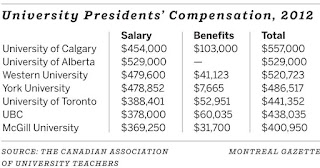Carol Buckmann is an attorney who has practiced in the employee benefits field for over 30 years. This post was originally published at Pensions & Benefits Law.
The Internal Revenue Service recently announced that it is not only discontinuing its requirement that individually-designed plans seeking approval be reviewed for new determination letters every five years, but it will no longer review these plans except on adoption and termination. The excuse given is lack of manpower and resources, but the decision leaves adopters of individually-designed plans in a quandary.
How are they to make sure that their plans are in compliance, given the seemingly ever-changing statutory and regulatory requirements and the serious consequences, up to retroactive disqualification, for failure to do it right?
Here are some suggestions for plan sponsors and the IRS to consider.
If you are a plan sponsor:
- Could you move to a pre-approved plan? The IRS will continue to approve the language in prototype and volume submitter plans used by vendors such as Fidelity and Vanguard and some banks and law firms. This would simplify life, but at the cost of sacrificing flexibility. Most of these plans have limited ability to accommodate custom provisions, or provisions designed to protect plan fiduciaries, such as contractual statutes of limitations for participant lawsuits or plan governance delegations.
- Encourage your law firm to develop a volume submitter plan. Plans are legal documents that are best drafted by lawyers, and these might accommodate more flexible legally-recommended options than vendor pre-approved documents. Large vendor documents often seem to be drafted to make life simpler for the vendors. However, your law firm will need a minimum number of adopters to do this.
- If you keep your own document, consider getting legal qualification opinions from your employee benefits counsel on a regular basis. These will be particularly helpful in audits and litigation, but may also be sought by buyers in acquisition transactions.
- If you keep your own document, consider adopting model and sample amendments issued by the IRS, which are “safe harbors” with language intended to automatically satisfy the legal requirements. Note, however, that these also will limit flexibility and may not work without modification if there are unusual or complicated plan designs.
- If you keep your own document, make sure to hire the most competent drafters. The consequences of drafting mistakes will get much more serious and expensive.
The IRS should consider the following changes to preserve individually-designed plans:
- Modify its rule that a document defect found on audit goes automatically into the closing agreement program, and is not eligible for the less expensive voluntary correction program (VCP) penalties.
- Modify its long-criticized rule that interim and discretionary amendments must be adopted by the end of the year in which they are effective or the plan sponsor’s tax return deadline for that year. There should be reasonable extended remedial amendment periods for adopting amendments to reflect changes in the law. (That would also limit the frequency with which qualification opinions might have to be obtained from counsel.)
- Approve major modifications to a plan, such as conversion to another type of plan as if a new plan had been adopted at the effective date of the change.
- Issue more model and sample language and add choices, similar to the way that adoption agreements can be used for different choices.
The basic decision made by the IRS seems to be set in stone. However, it will be a blow to the private pension system if these changes make individually-designed plans too risky to maintain.
Defined benefit plans, in particular, are already being discouraged by overly complex regulation and ever increasing PBGC premiums. Since individually-designed plans have long been a way to customize provisions to meet an employer’s own business needs, the IRS should make special efforts such as those suggested above to keep them alive.
Photo by Roland O’Daniel via Flickr CC License












